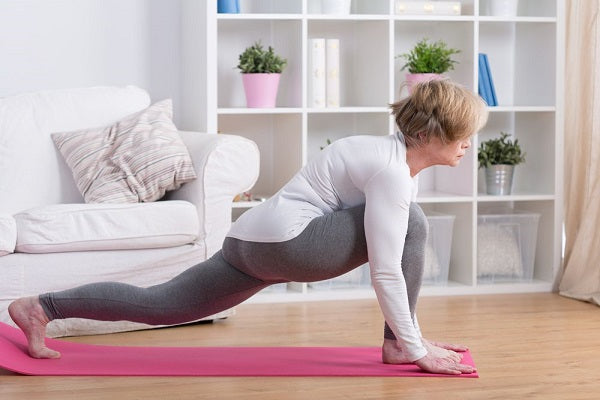
How to Adapt Workouts for All Ages and Abilities
Share
In the world of fitness, one of the biggest challenges is creating workout plans that suit the needs of different ages and physical abilities. Each stage of life brings with it physiological changes, and each individual has unique characteristics that require attention and adaptation. In this article, we explore how to tailor workouts for children, adults, seniors, and people with different fitness levels, ensuring safety and effectiveness.
Workouts for Kids
Training for children should be fun and focused on developing basic motor skills, such as running, jumping and throwing. The main objective is to encourage a taste for physical activity, promoting healthy habits from an early age.
Tips for adapting:
- Emphasize fun activities such as games and dynamic circuits.
- Avoid heavy loads and focus on bodyweight exercises.
- Ensure frequent rest periods to avoid fatigue.
Training for Young People and Adults
In this age group, workouts can be more intense and geared toward specific goals, such as gaining strength, increasing endurance, or losing weight. However, it is crucial to consider each person's starting level.
Tips for adapting:
- Assess your fitness level before starting your training plan.
- Introduce gradual progressions into exercises to avoid injuries.
- Alternate between cardiovascular, strength and flexibility training.
Training for Seniors
As we age, loss of muscle mass and bone density can compromise mobility and quality of life. Training for seniors should prioritize muscle strengthening, balance and maintaining autonomy.
Tips for adapting:
- Opt for low-impact exercises, such as walking, swimming or Pilates.
- Incorporate functional training to improve everyday tasks.
- Regularly monitor the practitioner's health, adjusting exercises as necessary.
Workouts for People with Physical Limitations
Whether due to injuries, chronic conditions or other factors, it is essential to personalize training to respect limitations and enhance capabilities.
Tips for adapting:
- Consult a qualified health professional or trainer before beginning training.
- Focus on exercises that work muscle groups that are not affected by limitations.
- Use adapted equipment, such as elastic bands or Swiss balls, to diversify the exercises.
Key Points for Adapting Workouts
- Initial Assessment: Know the physical condition, medical history and goals of each person.
- Gradual Progression: Avoid overload and allow the body to adapt to the training.
- Safety First: Ensure that exercises are performed correctly to prevent injuries.
- Constant Motivation: Create an encouraging environment and provide positive feedback.
Conclusion
Adapting workouts to different ages and abilities is an art that combines technical knowledge with empathy. Respecting each person’s unique characteristics not only improves results, but also promotes a healthy and sustainable lifestyle.
For more tips and personalized workout plans, explore our blog at treinamentoemcasa.com . Start transforming your health and well-being today!
Suggested reading:
- What is a Health Coach and How Can It Help You?
- 5 Tips for Creating an Effective Home Workout
- Benefits of Functional Training
Suggested further reading
1. How to Incorporate Mindfulness into Your Home Workout
The practice of mindfulness has been gaining prominence in the world of fitness, offering benefits that go far beyond the physical.
2. **[The Benefits of Training at Home with Virtual Equipment](https://treinoemcasa.com/blogs/news/treinar-em-casa-equipamentos-virtuais)**
Discusses how virtual reality is transforming the home training experience.
3. **[How to Use Your Smartwatch to Improve Your Workout](https://treinoemcasa.com/blogs/news/smartwatch-no-treino)**
Practical guide on using smartwatches to monitor and optimize training performance.
4. The Best Online Workouts to Complement the Gym
Shows how to combine face-to-face training with digital platforms.
5. Genetics and Nutrition: How to Personalize Your Diet
Discusses the use of genetic testing to personalize training and diet.
6. How to Adapt Workouts for All Ages and Abilities
Strategies to make fitness accessible to different ages and abilities.
7. How to Choose Sustainable Workout Equipment
It addresses how to make sustainable choices for training and the positive impact on the environment.
8. Make Your Workout More Fun with Fitness Games
Presents gamification methods to increase motivation in training.
9. **[How Technology Is Changing the Way We Train](https://treinoemcasa.com/blogs/news/tecnologia-no-treino)**
Explains the impact of emerging technologies, such as augmented reality, on fitness.
10. The Importance of Combining Fitness with Mindfulness ]
Focuses on integrating mindfulness and mindfulness practices into training routines.
11. Fitness and Technology Trends for the Next 4 Years
The fitness sector is constantly evolving, driven by technological advances and the search for more personalized and efficient solutions for well-being.
Health Coach Consulting: The First Step to Your Complete Well-Being
Health is not limited to the physical – it is a balance between body and mind. Our personalized consultancy health coach offers you expert guidance to develop healthy habits and achieve your goals in a sustainable way. With the support of a health coach dedicated, you will find strategies adapted to your needs, promoting the well-being you deserve.
Discover the impact of individual support and take the first step towards transforming your health from the inside out.



